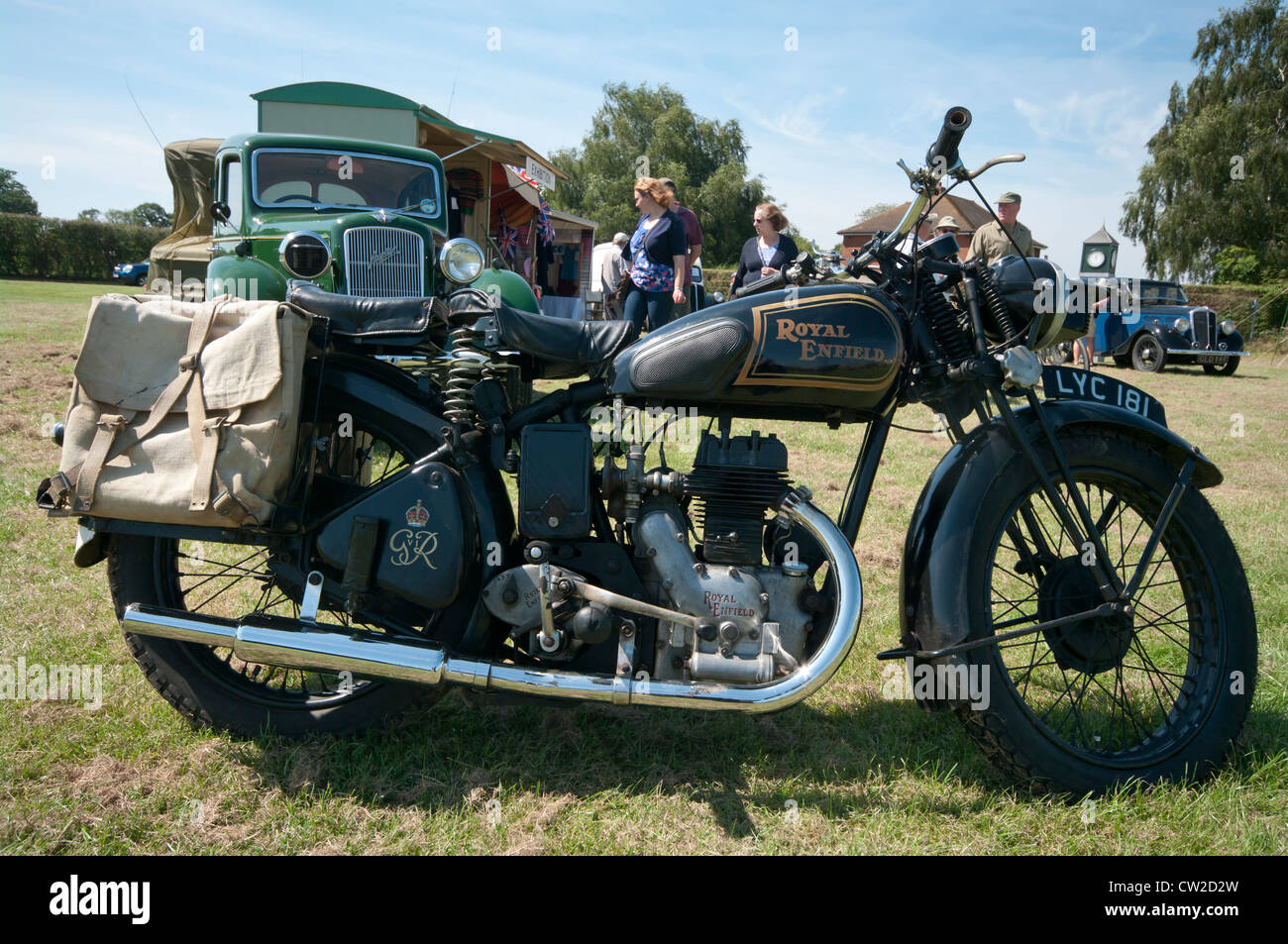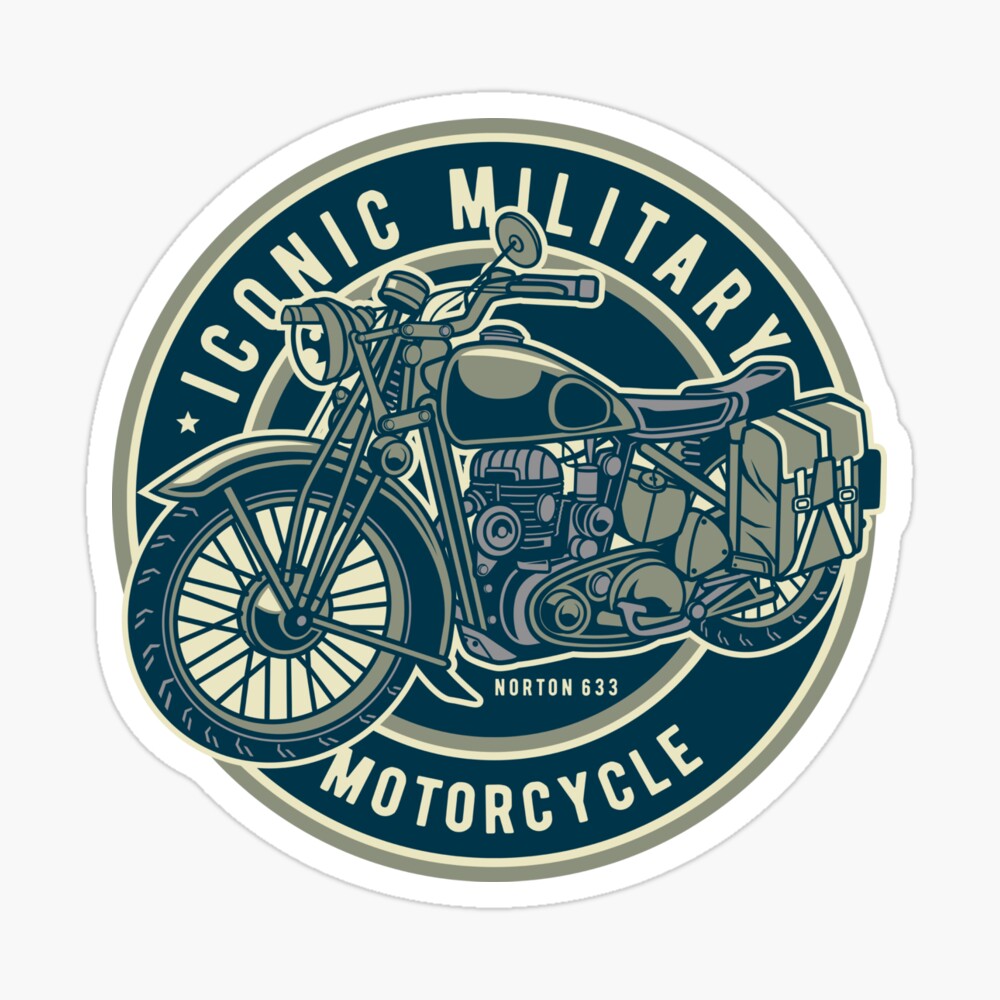Ww2 Military Bike - Although less powerful and safer than other vehicles of war, motorcycles were widely used in World War II. They were useful for messengers and scout troops, especially in fast-moving formations. Many nations involved in the war developed their own versions.
Many of the motorcycles used in the war were civilian models that were adapted and painted by the military. The Austrian Pitch 800 was an example of this approach, with many units purchased by the military direct from the factory. Its most unusual feature was the low-vee engine mounted in the bicycle frame. It was usually equipped with a bow.
Ww2 Military Bike

The FN company in Liège had been selling civilian motorcycles to the Belgian army since World War I. After saving the M86 bikes in 1936, it decided to go one better and create a model specifically for military use.
Historical Reconstruction Of World War Ii. Old Military Bicycle Stock Image
The M12 was much better than the M86. A box car was placed on the side with machine guns mounted on both front and back. The more powerful engine drove both the rear wheels and the sidecar wheels. It can maneuver well in small spaces thanks to its reverse speed.
One of many similar bikes built for the Czechoslovak army in the 1930s, the single-seater CZ 175 was not a powerful bike. Designed as a lightweight bicycle, it could be easily maneuvered to handle rough terrain, but had only limited power. Only the front wheel had any suspension.
Built for the French Army in 1938, the Armée was a sturdy, heavy version of the usual urban design. It was usually equipped with a bow and was mostly used for communication, carrying passengers. Its 750cc flat engine drove the rear wheels but not the side wheels.
The upgraded version, the AX2, was given an 804cc engine that provided higher traction, allowing it to travel better on rough terrain.
A Brief History Of Military Motorcycles
A large, heavy bike, the R75 was one of several German models designed specifically for sidecar work. The sidecar had racks for carrying mortars or machine guns, turning the entire vehicle into a mobile weapons platform. These vehicles were primarily used in Kradschützen units – mobile motorcycle forces within a Panzer division. Sometimes they also used paratroopers to escort them to the warehouses of the Junkers 52 transporters.
The Zundapp company's answer to the R75, the KS750 was another German heavy military engine. With the same engine configuration and size as the R75, as well as a standard sidecar, there was little to differentiate the KS750 from the BMW model. It served in a similar role, again carrying a mortar or machine gun mounted on a sidecar.
Built in 1937, the Type 97 was a Japanese imitation of the American Harley-Davidson. It was primarily used in the Japanese home islands, but was sometimes taken overseas as Japanese forces spread across East Asia.

The Type 97 was sometimes played as a solo bike, sometimes with a lightweight boxer. It usually carried no weapons, although sometimes a machine gun was mounted on the sidecar.
Vintage Army Motorcycle Hi Res Stock Photography And Images
The Welbike was an unusual British design. Intended to make air forces more mobile, it was small enough to be packed into a container and dropped by parachute. The result was an odd-looking bike with small wheels and an underpowered engine with just 98cc of power. The saddle and post are folded for transport.
Wheelbikes could not carry gears, were almost useless off-road and were unsuitable for tall riders. It was quickly abandoned by the military, but revived after the war as a relatively cheap and portable civilian vehicle.
Another British bike, the 16H's ruggedness and reliability made it popular despite its mediocre performance. The British Army often used it as a solo vehicle during convoy marshalling and to dispatch drivers. The Royal Air Force fitted it with the Flanker as standard. The Canadian Army, like its British counterpart, used the 16H for delivery work.
The Norton 633 was a more powerful version of the 16H. Designed to be fitted with a sidecar, it was the only British military bike to provide sidecar transmission drive. This sidecar was not like ordinary citizens, little more than an open box, without weather protection. It had a rack for a Bren light machine gun and was sometimes used as a weapons platform.
Harley Davidson's Wla—the Bike That Won The War
Cushman scooters were adopted early in the war for couriers and employees of major US military bases. Due to their effectiveness, a new version was developed for Air Force use in 1944. Like the Excelsior Welbike, the Cushman Airborne can be deployed by parachute and assembled on the ground to make paratroopers more mobile. It had limited fixtures - no lights - but was more effective than the Wheelbike.
A slight modification of an existing civilian vehicle, the Harley-Davidson WLA was a popular bike among the US armed forces, who used it for police work, reconnaissance and communications. Its lights were modified from the civilian model to meet military standards and fitted with special brackets to mount the machine gun. At 65 mph, it was one of the fastest bikes of the war.
Less than half the weight of the Harley-Davidson WLA, the American M1 was originally designed for the Air Force. To this end, its components were designed to withstand the fall - if necessary, the ignition can work without a battery. Rugged, reliable and excellent for overland travel, it was later adopted by other courier services. A military bike is a bike specially designed according to the needs of the armed forces. In use in many armies around the world since the beginning of the 20th century, bicycles allow movement of dirt and increase mobility on the battlefield. Additional advantages of military bicycles are that they allow individual soldiers to carry more equipment without being burdened and are much cheaper to build and maintain than horses and vehicles.

The first bicycles were introduced in the armed forces of many nations at the end of the 19th century. At the beginning of the First World War, all fighters used them.
Royal Enfield Wd/re
The German army had 36 independent companies of cycle infantry, a battalion of cyclists attached to each cavalry division, and an additional 10 reserve cycle companies and 17 replacement crews. The Italian Army's Bersaglieri troops were the first to use folding bicycles. During World War II, bicycles were introduced as a means of providing transportation to paratroopers after landing.
By the 20th century, the armies of many nations had separate units of bicycle-riding infantry. It was not until 2003 that the Swiss Army reformed the last three-cycle infantry regiment. In the late 1990s and early 2000s, there was a resurgence in testing of all-terrain and folding bicycles for infantry use in combat and urban patrol.
Some of the innovations introduced in bicycles designed for military use also found their way to civilian markets, such as pad brakes and cyclometers. In modern times, bicycles and electric bicycles are still used by many armies around the world, but there are no dedicated bicycle infantry units. The Indian 841 was a motorcycle manufactured by the Indian motorcycle manufacturer. For desert warfare. This pioneered the drive configuration later popularized by the Moto Guzzi, a 90-degree air-cooled longitudinally mounted V-twin with shaft drive to the rear wheel.
And offered I $350,000 in exchange for 1,000 shaft-drive, side-valve, twin-cylinder test motorcycles. In response to this request, India designed and built 841 (8 for the new major design and 41 for the year).
Harley Davidson Wla
The Indian 841 was heavily inspired by the BMW R71 motorcycle, as well as its competitor, the Harley-Davidson XA.
However, unlike the XA, the 841 was not a copy of the R71. Although its tubular frame, piston rear suspension, four-speed gearbox, foot shifter, manual clutch and shaft drive were similar to the BMW, the 841 differed from the BMW in several respects, notably its 90-degree longitudinal V-crankshaft. Double gen and carrier fork.
Also, unlike the R71 and XA, the 841 used a heel and toe shift pedal with a heel-operated up and down shift.

The bike also features a low compression ratio of 5.1:1, meaning it can run on low octane fuel, crash bars to protect the cylinders, 18-inch wheels, two separate gas tanks for a total of 5 liters of fuel. and newly designed carrier forks for better shock absorption.
Military 1948 1964 Triumph Trw 500
To keep costs down, the new V-Twin shared many internal components with the existing Indian Sports Scout, resulting in the same 2.87 in × 3.50 in (73mm × 89mm) bore and stroke.
But the motorcycle was not accepted for major military use. The Jeep seemed better suited to the roles and missions for which these motorcycles were designed.
Indian enthusiast Sammy Pierce used his 841's tank and frame along with the Indian Chief's case and cylinder to build his American P-61 rocket, which was featured on the May 1952 cover of Cycle magazine.
Same powertrain configuration, using wide-angle longitudinally mounted V-twins
The World War Ii History Of American Chopper Motorcycles
Us military records ww2, military ww2, ww2 military surplus, free military records ww2, ww2 military records, ww2 military collectables, military death records ww2, military service records ww2, military records from ww2, military uniform ww2, military medal ww2, german military records ww2

0 Comments